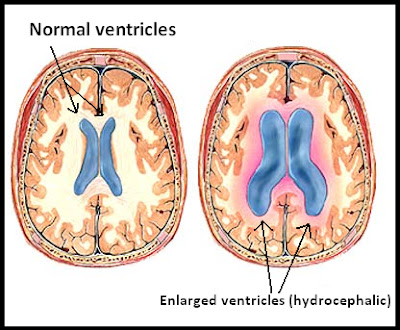What has it been, 2 weeks since my last post? 2 months? A THOUSAND YEARS?!?! Ugh, time flies, FLIES I TELL YOU! Whoops. Well, here is a little something to hopefully make-up for my distastefully absent blogging presence.
I've only ever run one half marathon and one full marathon and I can say both were under ideal conditions. I'm in pretty decent shape with all my limbs attached and working well and I suffer from no notable serious congenital or chronic conditions. Furthermore, both race days featured sunny skies and crisp weather with no humidity and little wind. Given those conditions I should have won the race! Alas, I did not, but I did complete both courses, so that's something.
However, I have been reading up on my upcoming race in Dublin (it's in 3 weeks, THE MADNESS!!) and also other, more extreme races. I don't know if I should be impressed that humans attempt and succeed in finishing the races I'm about to describe to you, or if I should shake my head at how so much time and effort is applied to something that seems so outlandishly crazy.
Who am I kidding. I'm American, and American's laud insanity. The crazier, the better. (Just to be clear, the Dublin race looks on par with the Rome race, albeit a tad bit more hilly. But the average 50F degree weather is
perfect when you plan to engage in an activity that will make you sweat
for 4 hours straight.)
Thus, let me reveal to you what I can only call the Fear Factor Edition of the Ultimate Marathon Races.
The Great Wall of China Marathon
I actually have a friend that just ran this. God bless her, I don't know how. A majority of the race is actually run on the Great Wall. 20% of the race involves running up and down over 2000 giant stone stairs. These stairs are MONSTERS. It looks like trying to run up a ladder. Forget the Boston Marathon "Heart Break Hill" incline, these stairs will murder you. Race programmers recommend you wear hiking boots, for ankle stability, the day before the race when you are allowed to walk around the wall and inspect the course. HIKING BOOTS! Do I needs climbing gear and a helmet too?! I read that Wall marathon winners usually finish the race in around 4 and half hours. To put that in perspective, winners for average-intensity marathons usually clock in at around 2 hours and change. So, they are more than doubling their race time.
The Antarctic Ice Marathon
So, this gem of a race takes place just a few hundred miles from the South Pole at an elevation of 700 meters. There's also the average -21C degree (-6F degree) wind chill and 20 mile per hour winds. Oh, and if you thought there would be penguins there to cheer you on, forget it! Penguins don't live this far South BECAUSE IT THE COLDEST MOST FORSAKEN PART OF THE WORLD. But, fear not, if punishing yourself for 26 miles isn't enough, you can opt to do the 62 mile Ultra Antarctic Ice Marathon. Here is a direct quote from the AIM website:
"The 100k (62.1 miles) distance will seem endless, run under a
sun that never sets against the backdrop of hills, mountains and large
expanses of ice."
This sounds like the opening to a horror movie. I'm assuming it's where King of Thrones got the idea for their season two finale. However, if anyone ever asks me if I want to participate in this event, my response will go something like this:
The Man vs. Horse Marathon
This race isn't so much difficult as it is weird. Who on earth thinks a human can outrun a horse over a 22 mile stretch? The story goes that two old Welsh geezers got a bit too tipsy one night at the pub and made a wager that a man could beat a horse over a long distance. Thus the Man vs. Horse Marathon was born in Wales, England in 1980. There are some provisions: the runners get a 15 minute head start and the horses must participate in several mandatory vet checks along the way. The course itself is general Welsh countryside, mostly dirt roads over hillsides, with some creek crossing throw in for fun. A maximum of 50 horses are allowed to race, making Man vs. Horse the world's biggest horse race.
For the first 23 years, it was a horse who took the prize (imagine that) but then, in 2004, a male runner finally won, beating a horse by 2 minutes. Then in 2009 some lightning bolt of a man beat the first horse by 11 minutes.
I have so many questions. But the biggest one is, who was riding the horses the years a man won? Children? Did all the horses simultaneously come down with the flu? The prize is over $30,000.00 American dollars so I can't imagine a rider would let a man win, considering how expensive it is to keep a horse. My guess is (I did not overly research this) that only non-professional riders are allowed to participate on non-professional-race horses. That and the rugged terain slows the horses down?
All of this makes no sense.
The Sahara Desert Morocco Marathon
Are you tired of water? Do you like baking alive? Do you desire to constantly be surrounded by a wasteland of sand, dirt, and the complete evisceration of all hope? Then the Sahara Desert Marathon in Morocco is for you! But I haven't even gotten to the best part. This marathon is a MEGA marathon that spans over 6 days and covers 156 miles. Sexy, right?
If you're still undecided, just listen to the story of Italian police officer Mauro Prosperi (side note, "prosperi" in Italian translates to "prosper" in English. The epic irony of this will hit you shortly). Mauro got lost in a sand storm during the1994 race and wandered through the Sahara for more than 9 days. He ran over several hundred kilometers in the wrong direction and into Algeria. After 36 hours he ran out of food and water. He then survived by drinking his own urine and eating snakes. He took shelter at an abandoned mosque where he found some bats to eat too. So despondent and desperate was Mauro that he tried to commit suicide by slitting his writs with a pen knife he had taken with him. But, due to extreme dehydration, his hyper-thick blood clotted before he could bleed out. A nomadic family finally found him and brought him to an Algerian military camp for medical care. All told, Mauro lost over 30 lbs of body weight during those 9 days.

It should be noted that Mauro entered the race AGAIN just 4 years later, but had to drop out due to a severely stubbed toe. This is an example of when the part of your brain that controls good judgement and rationality takes over for the maniacally insane death wish that has been controlling your decision making processes for the past 4 years and says, "STOP IT!". Seriously, a stubbed toe? That's just a cover for the truth, which is, I DON'T WANT TO ALMOST DIE AGAIN! LET ME GIVE YOU ANY EXCUSE SO THAT I CAN GO HOME AND LIVE! And I support this decision. 100%
Le Marathon des Chateaux du Medoc
Now this is a marathon I could get behind. The Marathon in des Chateaux du Medoc is held in Bordeaux France. The race winds through 59 vineyards and runners are offered red and white wine to drink at the aid stations, along with foie gras in lieu of the traditional bananas runners usually eat. Many of the participants opt to wear costumes during the run as well. It has been called the worlds "most indulgent" marathon.
So let's end things on a good note. Marathons mean fun costumes and good wine. Or, in Dublin's case, good beer.
That reminds me, the race is on the 29th of October! So close! Training is coming along and my tickets are bought. A big thanks to my parents who are coming to watch me run the race in person!
Also a big congratulations to my family in Massachusetts who sponsored a charity walk through the Hydrocephalus Association for my niece Nicole. The event raised more than $2000. Nicole herself came out to join the walk via wheel chair and I am just so thrilled for all the love and support our family and friends have shown her.
Finally....HAVE YOU DONATED TO THE RUNCARLARUN PROJECT? We're coming along, little by little. We're now up to 24% of my goal to raise $2000 US dollars. Not bad! THANK YOU SO MUCH TO EVERYONE WHO HAS GENEROUSLY DONATED! And if you have not and would like to, go
HERE to donate now!
And don't worry, donations can be made up until the 28th of December, so when I get home for Christmas, I will be finding all of you (yes, even those of you I am visiting in NYC for New Years) who haven't donated by then and asking you this:
or this:
In which of the two ways will I ask you this question? Do you really want to take your chances?? Do you?! Remember, I'm coming back to the States...





















































